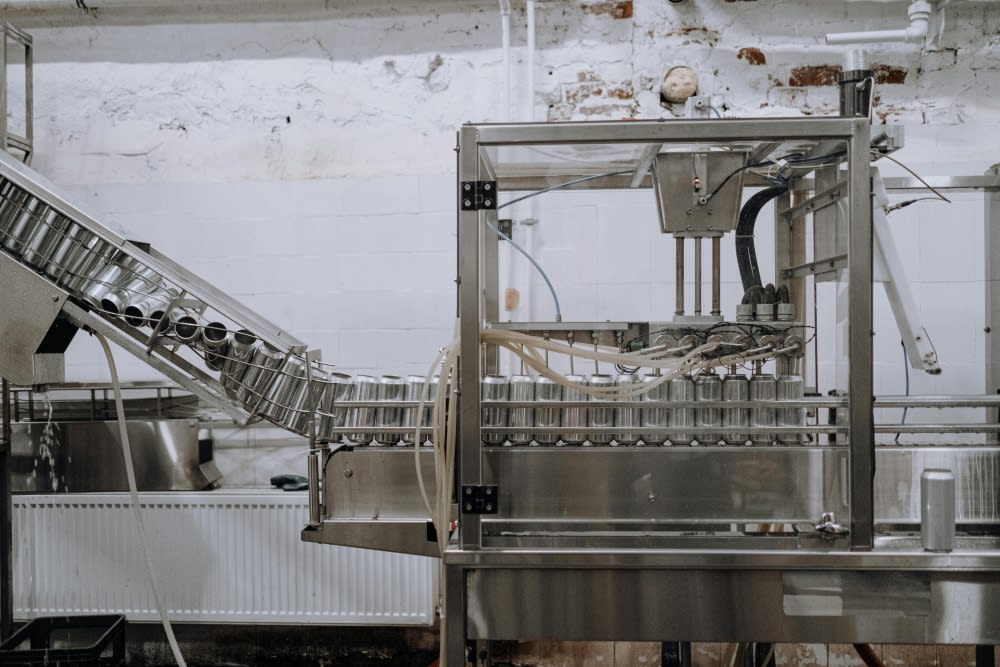- Published 28 Mar 2024
- Last Modified 28 Mar 2024
- 5 min
Optimising Australian Packaging Lines with Photoelectric Light Sensors
Discover the benefits of integrating photoelectric light sensors into manufacturing and assembly lines to meet growing production demand.

According to Statista, the value added in Australia’s manufacturing market is projected to amount to US$88.04 billion, with a compound annual growth rate of 3.26% expected in the next 4 years. As the local manufacturing and distribution sectors increase in competitiveness and production volume, the efficiency of packaging lines is paramount in meeting market demands.
In order to meet the growing demands and maintain operational efficiency, advanced equipment, such as photoelectric (PE) light sensors, is being adopted by more manufacturers.
This article highlights the role of photoelectric light sensors in elevating the speed and accuracy of manufacturing and packaging lines across Australia, highlighting a significant stride towards technological advancement in the industry.

Understanding Photoelectric Light Sensors in Packaging
Photoelectric sensors are sophisticated devices that use light to detect the presence, absence, or distance of an object without coming into physical contact with the object itself.
How Photoelectric Light Sensors Work
A photoelectric sensor first sends out light energy (red LED, infrared LED, or red laser) from the face of the sensor to create a detection zone either on a target or a reflector module, depending on the model. When a target moves into this detection zone, the sensor switches on. When the target moves out of the detection zone, the sensor switches off.
A receiver component then collects and interprets the data from that beam of light to detect and report the presence, absence, or distance of various physical objects or quantities.
Types of Photoelectric Light Sensors
There are various types of photoelectric light sensors, including through-beam, retro-reflective, and diffuse, each suited to specific applications. These sensors are versatile tools that can be used across multiple manufacturing sectors, including food & beverages, pharmaceutical, packaging, and automotive industries. In packaging lines, photoelectric light sensors can help ensure streamlined and efficient packaging processes by precisely detecting the presence of items for accurate counting and sorting.
Enhancing Speed and Accuracy on Packaging Lines
The integration of photoelectric sensors into packaging lines can significantly boost process speed.
Photoelectric sensors offer significant advantages by being non-contacting, ensuring both the sensor and target remain undamaged. These sensors are also available in a wide operational range, capable of detecting targets from very close to far distances without the need for perfect alignment. Additionally, photoelectric sensors can sense almost any opaque material, and there are specialised sensors designed for other materials, enhancing their versatility in diverse applications.
With the use of photoelectric light sensors on packaging and manufacturing lines, aligning products on conveyor belts and counting items can become streamlined. Manual intervention can also be minimised to further boost efficiency and accuracy. Furthermore, these sensors can be used to enhance overall production accuracy by ensuring consistent packaging sizes, correct labelling, and overall product quality.
Photoelectric light sensors can also be programmed to sound an alert if an absence or misalignment is detected, making them extremely useful for error detection in high-volume batch production. This dual impact of speed and precision directly translates to heightened productivity and reduced waste.
Photoelectric Light Sensors and Australian Industry Compliance
Compliance with Australia's stringent industry standards is a hurdle for many businesses. As Australia’s Department of Climate Change, Energy, the Environment and Water has announced plans to implement mandatory standards for packaging design, these sensors can be used to ensure compliance. Photoelectric light sensors can accurately and efficiently facilitate adherence to these new regulations by ensuring that packaging operations meet the highest quality control benchmarks.
Implementing Photoelectric Sensors: Considerations for Australian Businesses
Choosing the appropriate photoelectric light sensor necessitates a thorough understanding of the specific needs of packaging operations. Factors such as sensor range, environmental conditions (including temperature and humidity), and compatibility with existing machinery are crucial. It is also essential to consider the maintenance requirements of these sensors to ensure their long-term reliability and performance.
Additionally, businesses must consider the logistical aspects of implementation, such as potential downtime and the strategic upgrade of manufacturing lines, to minimise disruption and maximise the return on investment.

Investing in Technology for Strategic Advantages
The introduction of photoelectric light sensors into assembly and packaging lines represents a transformative leap towards operational excellence in Australia's manufacturing sector. This technological equipment not only enhances speed and accuracy but also ensures compliance with industry standards, reinforcing the competitive edge of Australian businesses in the global market.
Partnering with reputable suppliers like RS can help Australian businesses tackle the varied and complex challenges in the manufacturing industry. Australian businesses are encouraged to explore adopting photoelectric light sensors to optimise their packaging operations, embracing the future of manufacturing technology with confidence.
Popular Photoelectric Light Sensor Brands
TE Connectivity
TE Connectivity is a global leader specialising in designing and manufacturing connectors, sensors, relays, contactors, and other tools for a range of industries.
Bulgin Components
Bulgin specialises in designing and manufacturing environmentally sealed waterproof connectors and electronic components backed by 100 years of industry experience.
Related links
- RS PRO Light Convergent Reflection Photoelectric Sensor 25 mm...
- RS PRO Light Convergent Reflection Photoelectric Sensor 5 cm...
- Baumer Light Barrier Photoelectric Sensor 1800 mm Detection Range IO-LINK
- Baumer Light Barrier Photoelectric Sensor 1 m Detection Range IO-LINK
- 7 Factors to Consider When Choosing Air Quality Monitors
- Understanding 3D Printing Materials for Commercial Use
- Colour & Light Sensor ICs
- ifm electronic Reflective Tape for Use with Redlight & Infrared...